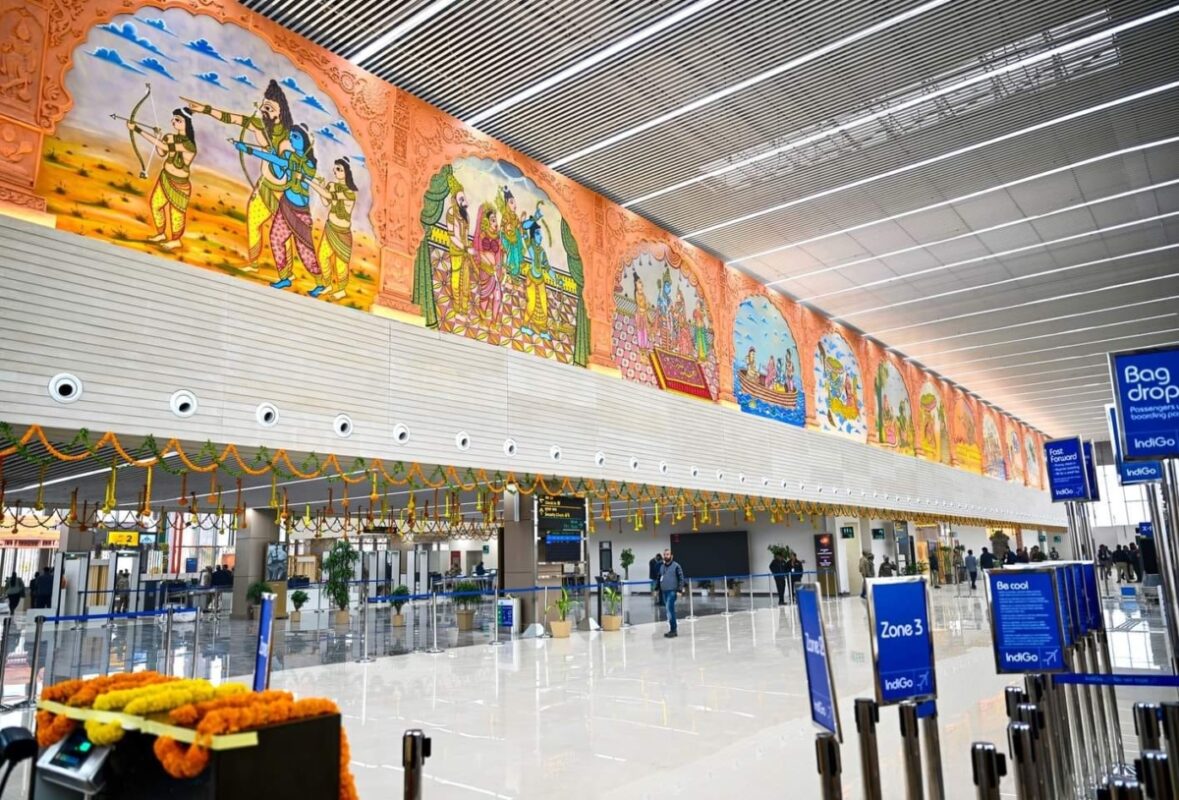The forthcoming inauguration of the Ram Temple in Ayodhya, Uttar Pradesh, scheduled for January 22, 2024, marks a historic moment, not just from a religious standpoint but also for its profound implications on tourism and the broader economy. Anticipation swells as the city prepares for the consecration ceremony, poised to draw around 8,000 devotees, including distinguished guests, showcasing the inclusivity and significance of this monumental event.
The event, graced by Prime Minister Narendra Modi and Uttar Pradesh Chief Minister Yogi Adityanath, is not only expected to enhance the city’s spiritual allure but also catalyze a tourism surge, redefining Ayodhya’s status as a major tourist destination in northern India.
Ayodhya’s metamorphosis into a burgeoning tourism hub stems from extensive infrastructure developments, including the inauguration of the Maharishi Valmiki International Airport. This modern aviation gateway, established at a cost exceeding Rs 1,450 crore, boasts state-of-the-art amenities and an annual handling capacity of 10 lakh passengers in its initial phase. Set against the backdrop of the forthcoming Ram Temple, the airport’s architecture exudes the grandeur of the temple, fostering a spiritual connection from the moment visitors arrive.
Furthermore, Ayodhya’s railway station, now christened Ayodhya Dham Junction Railway Station, underwent a comprehensive redevelopment exceeding Rs 240 crore. Its revamped infrastructure, inaugurated by PM Modi himself, includes enhanced amenities and services to enrich the passenger experience. The station is a pivotal link facilitating easier access for travelers, aligning with the overarching goal of transforming Ayodhya into a seamless pilgrimage and cultural destination.
The city’s roadways have not been left untouched, witnessing the inauguration of four redeveloped roads—Rampath, Bhaktipath, Dharampath, and Shri Ram Janmabhoomi Path. These pathways not only aid pilgrims in reaching the temple but also contribute to Ayodhya’s overall aesthetic appeal and accessibility.
In tandem with these infrastructure milestones, Ayodhya has seen a flurry of hotel developments and investments, positioning the hospitality sector to cater to the influx of tourists and pilgrims. Eminent players such as IHCL, Marriott, Sarovar Hotels & Resorts, and Wyndham Hotels & Resorts have inked deals for hotels, with constructions underway for five branded hotels comprising 520 rooms. These endeavors, expected to cost around INR 350 crore, are poised to unfold post-2024, aligning their openings with the city’s burgeoning stature.
Industry experts anticipate a significant tourism boom in Ayodhya, forecasting a surge in visitors from across India and potentially other countries. The inauguration of the Ram Temple and associated infrastructure enhancements adds to Ayodhya’s historical and cultural allure, making it an enticing destination for spiritual and cultural explorations.
The city’s tourism potential extends beyond the temple, encompassing various attractions such as Ram Katha Park, Mani Parvat, Tulsi Smarak Bahwan Museum, and numerous other sites steeped in historical and religious significance. Prime Minister Modi’s visit to Ayodhya ahead of the temple consecration underscores the government’s commitment to bolstering the city’s infrastructure and cultural heritage.
The tourism narrative intertwines with economic growth, with analysts foreseeing an upswing in sectors like hospitality, transportation, and retail. Stocks in companies like Praveg Limited, Indian Hotels Company Ltd, IndiGo, IRCTC, EaseMyTrip, and ITC Ltd are earmarked as potential beneficiaries, reflecting the investor optimism surrounding Ayodhya’s transformation.
As Ayodhya braces for the historic inauguration of the Ram Temple, the city stands at the precipice of a renaissance—a convergence of spirituality, culture, and economic prosperity. The collective anticipation for this significant event reverberates not only among the devout but also within the realms of business and tourism, heralding the dawn of a new chapter in Ayodhya’s illustrious history.

